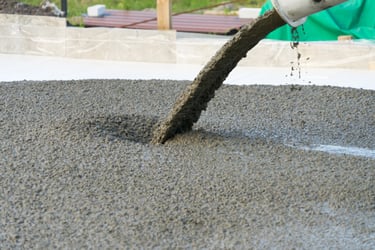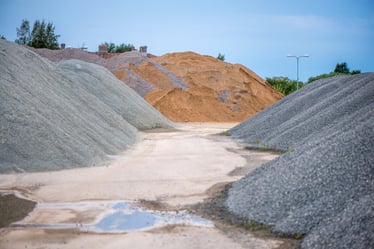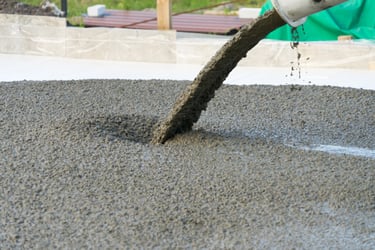Concrete is one of the most used construction materials and is made from three basic components: water, aggregates and Portland cement. The construction industry uses two main types, called ready-mix concrete and site-mix concrete. Selecting the right type for a project is very important: both types have their own specifications, advantages and disadvantages. While both types are viable in concrete construction, one may be more beneficial than the other depending on project conditions.
Ready-made concrete mix is manufactured in a factory and delivered to the construction site unhardened and plastic, ready for use. Ready-mixed concrete is sold by volume, usually expressed in cubic meters.
Optimize your building design and construction methods to reduce costs.
Site-mixed concrete is volumetric concrete prepared at the construction site, as its name implies. The components of concrete are mixed in specific proportions to obtain the desired strength. This method requires the use of formulas to determine the amount of materials and steps to obtain the desired consistency. Workers must be careful and meticulous with material proportions to avoid concrete quality problems.
Differences between ready-mixed concrete and site-mixed concrete


Both types of concrete are viable in construction projects, but one may have significant advantages over the other depending on the needs of the project. The following table describes some advantages and disadvantages of each type of concrete:
|
Factor being considered |
Ready concrete mix |
Mixed concrete on site |
|
Time |
Delivered ready to use and less time-consuming. |
Slower process due to multiple steps, formulas and setup time. |
|
Equipment |
Does not require equipment on the construction site. |
Requires a weighing mixer to make concrete on site. |
|
Distribution |
Can be delivered to multiple locations within a project. |
It must be mixed at the exact point of use, to avoid contamination |
|
Recommended application |
Tall structures |
Low structures |
|
Storage Requirements |
Does not require additional storage space for raw materials |
Requires controlled storage space to manage and protect materials such as cement and aggregates |
|
Waste |
On-site material waste is minimal |
There is some loss of material during storage and mixing |
|
Quality |
Consistent quality, thanks to an automated and controlled environment. |
Continuous supervision aims for consistency between batches. Setup time may vary due to inconsistency. |
|
Workers |
Skilled labor is only needed to pour and compact the concrete. |
Requires more man hours to prepare concrete at the project site. |
|
Material takeoff |
Concrete can be calculated as a single item. |
Materials must be estimated individually and their purchase planned separately. |
|
Space |
Requires adequate access to the concrete mixer truck. |
Requires space for material storage and batch mixers. |
|
Batch size |
Large quantities of concrete can be delivered. |
Mixing large quantities of concrete on site is difficult. |
|
Website location |
If the batching plant is located too far from the construction site, the concrete will require retardants and other additives to prevent setting. Transport costs will increase, there may be quality concerns. |
Requires transportation of all materials and mixing equipment to the construction site. |
Ready-mix concrete tends to be better for many projects, despite its higher cost. Ready-mixed concrete offers higher quality and variation between batches is minimal when the concrete is prepared in a factory environment. Another key factor is project location: transportation requirements partially determine which type of concrete is best suited for a project.
Ready-mix concrete is typically recommended for large projects that require a large volume. On the other hand, local mix is a better option for small projects and renovations, where the volume of concrete is smaller.

